
Citrus Tree Pests Caterpillar Stock Image Image of caterpillar, pests 202814013
The provenance of Old World swallowtail butterflies, Papilio demoleus (Lepidoptera: Papilionidae), recently discovered in the New World. Annals of the Entomological Society of America 99:164-168. Heppner, John B. 2006 "Lime Swallowtail in the Caribbean and Possible Impacts for Florida Citrus" Florida Department of Agriculture and Consumer.

Citrus Swallowtail Caterpillar from Taiwan What's That Bug?
The larval or caterpillar stage can be considered a pest due to its habit of feeding on the foliage of most Citrus species. A few orangedogs, as the larvae are commonly called, can quickly defoliate small or young plants.

Giant Swallowtail caterpillar on lemon tree. I found a swa… Flickr
For all caterpillar issues,. Rates for pesticides are given as the maximum amount required to treat mature citrus trees unless otherwise noted. To treat smaller trees with commercial application equipment including handguns, mix the per-acre rate for mature trees in 250 gallons of water. Calibrate and arrange nozzles to deliver thorough.

Citrus Caterpillar stock image. Image of africa, garden 48669159
Caterpillar hosts are trees and herbs of the citrus (Rutaceae) family; also prickly ash, Zanthoxylum americanum, common rue, Ruta graveolens, and hop tree, Ptelea trifoliata. On the left you'll see a mature caterpillar (disguised as a bird dropping). The one on the right is a younger caterpillar.
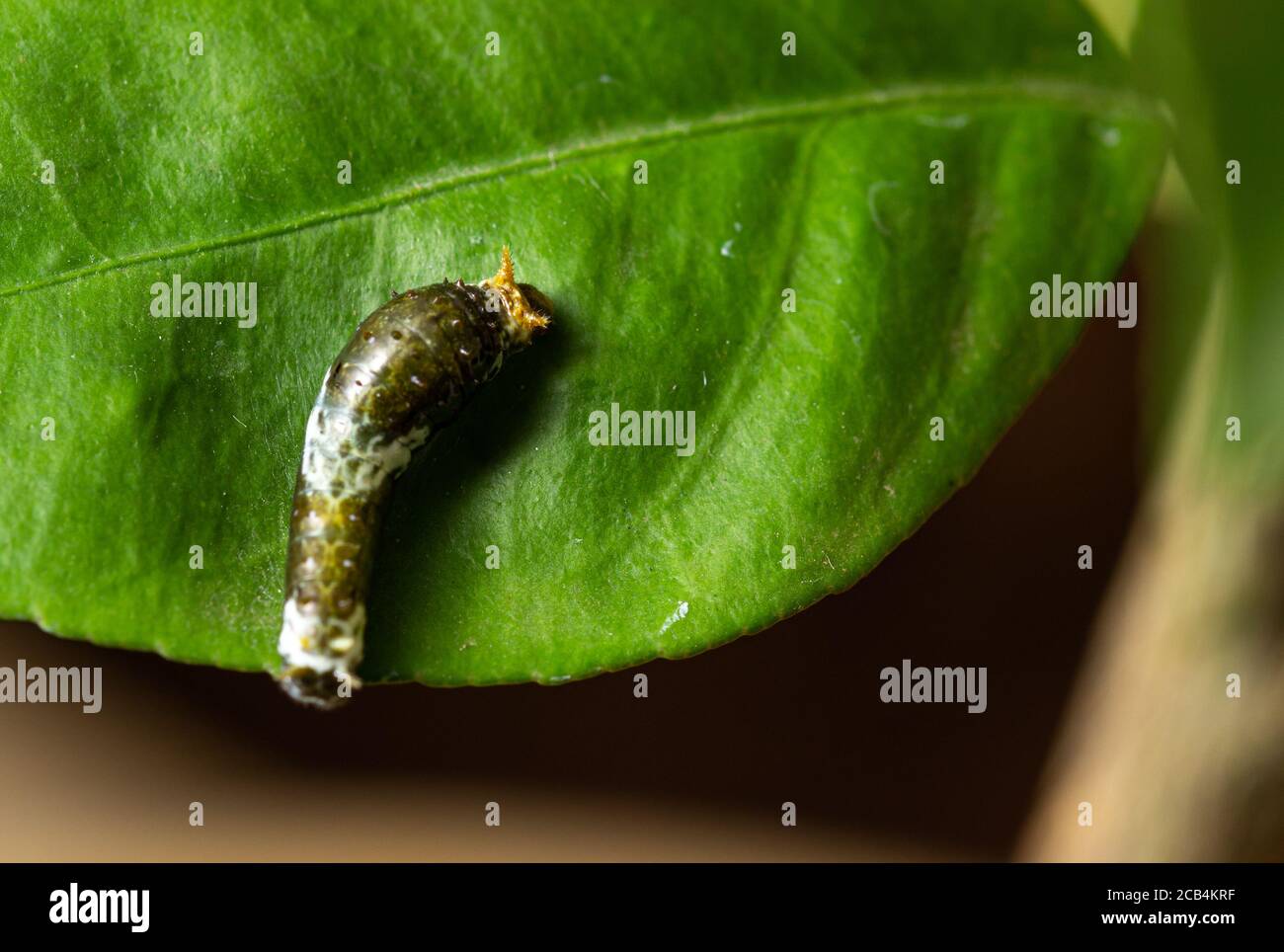
Citrus caterpillar relaxing on leaf also known as lemon tree caterpillar Stock Photo Alamy
With citrus trees, in particular, Orange Dog caterpillars can come in flocks of hundreds. These slinky creatures love the citrus taste (who can blame them?) and will secrete a pungent odor to deter anyone who tries to remove them. Unfortunately, the best way to rid your trees of these is by picking them off by hand.
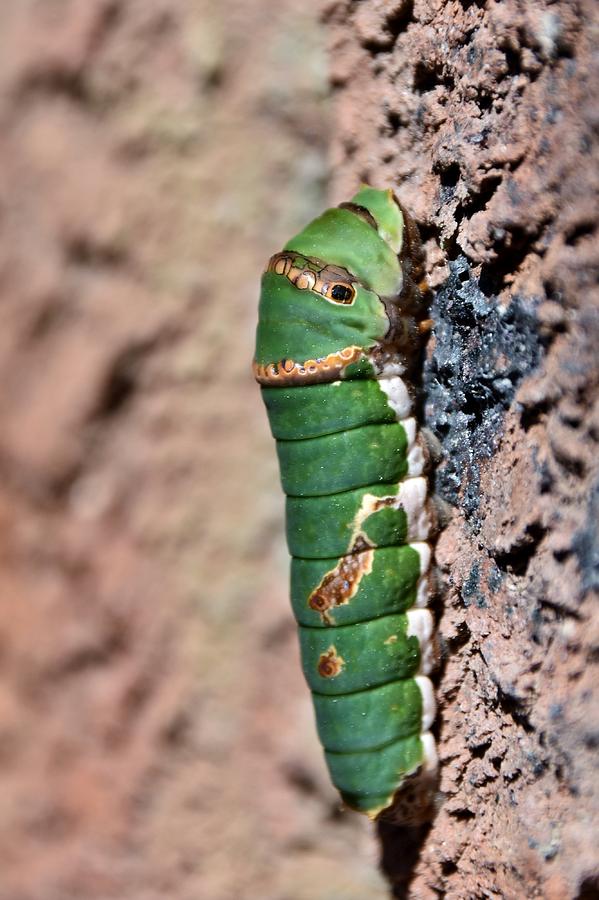
citrus swallowtail Caterpillar Photograph by Werner Lehmann Fine Art America
The caterpillar of this non-native butterfly can defoliate a citrus tree, on your solution for Florida-Friendly gardening from the University of Florida's Center for Landscape Conservation and Ecology.

Spotlight citrus swallowtail Natural History Museum
The lime swallowtail, Papilio demoleus Linnaeus, is sometimes called the chequered or citrus swallowtail. This butterfly ranges widely and is an extremely successful invader. Its proliferation appears to be aided by agricultural land use and urbanization that create new, suitable open habitat and enhanced availability of resources. Figure 1.
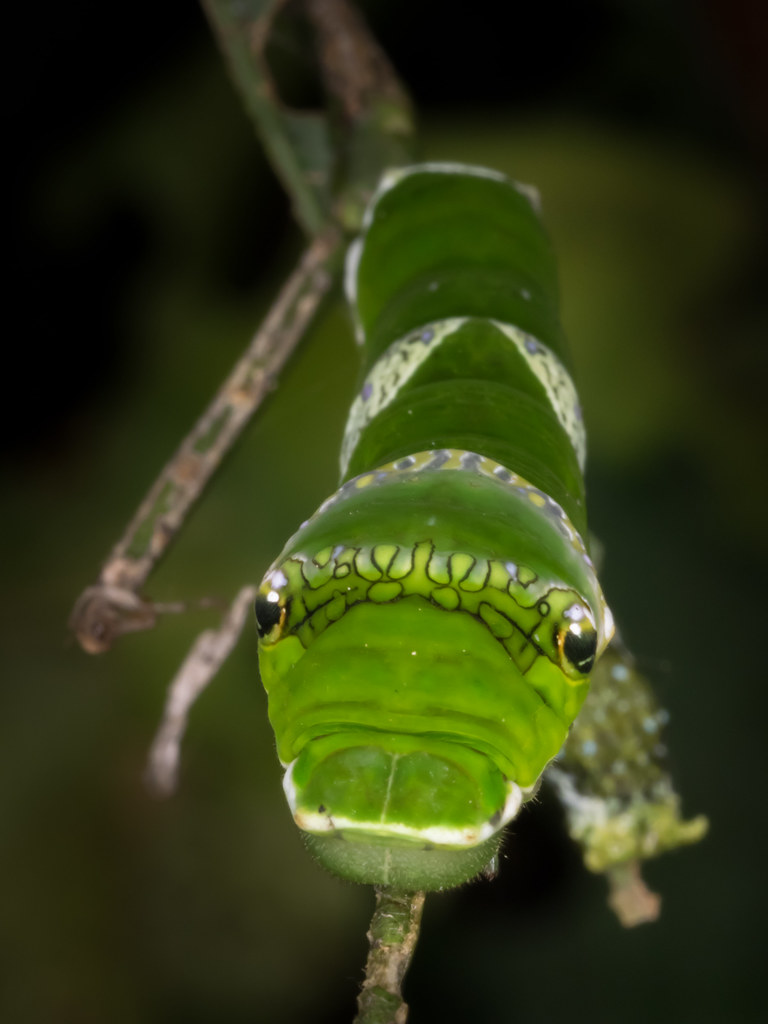
Citrus Swallowtail Caterpillar Citrus Swallowtail Caterpil… Flickr
Papilio demoleus is a common and widespread swallowtail butterfly. The butterfly is also known as the lime butterfly, [1] [2] lemon butterfly, lime swallowtail, and chequered swallowtail. [2] These common names refer to their host plants, which are usually citrus species such as the cultivated lime.
What is this caterpillar that looks like bird poop? Southern California on a Citrus tree r
The citrus swallowtail caterpillar often called the "citrus swallowtail" or "citrus orange dogs" of citrus trees, is the larva of the giant swallowtail butterfly (Papilio cresphontes cramer). This caterpillar is a big problem for the gardens of the United States and other citrus-growing countries.
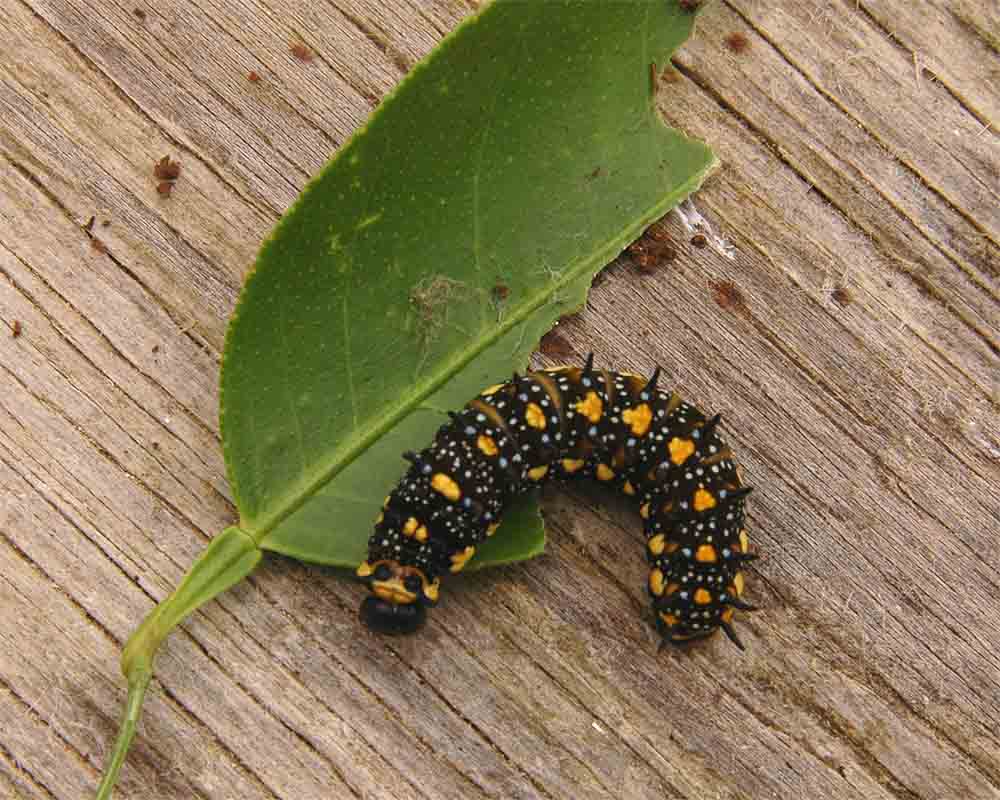
The Nature of Robertson Citrus Caterpillars two types.
Found on all varieties of citrus leaves, these caterpillars begin life very small, with an irregular brown and white coloration camouflaging them to look almost exactly like a piece of bird.
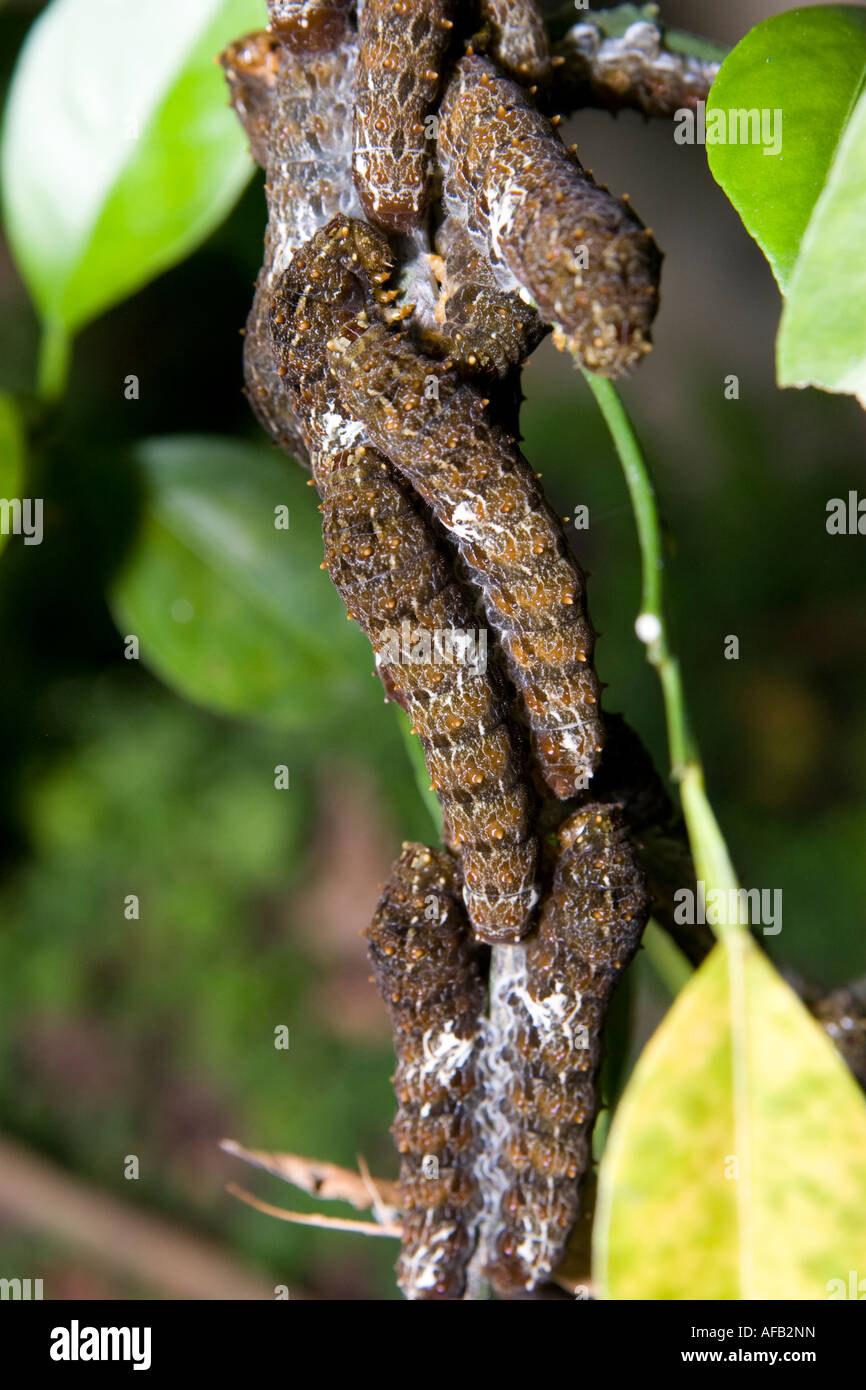
Group of Orange Dog Caterpillars on a citrus tree Stock Photo Alamy
The orange dog caterpillar looks like bird droppings on citrus tree leaves. They aren't very cute in the larva (caterpillar) stage but after pupation they become the beautiful Heraclides cresphonte; known commonly as the Giant Swallowtail butterfly.
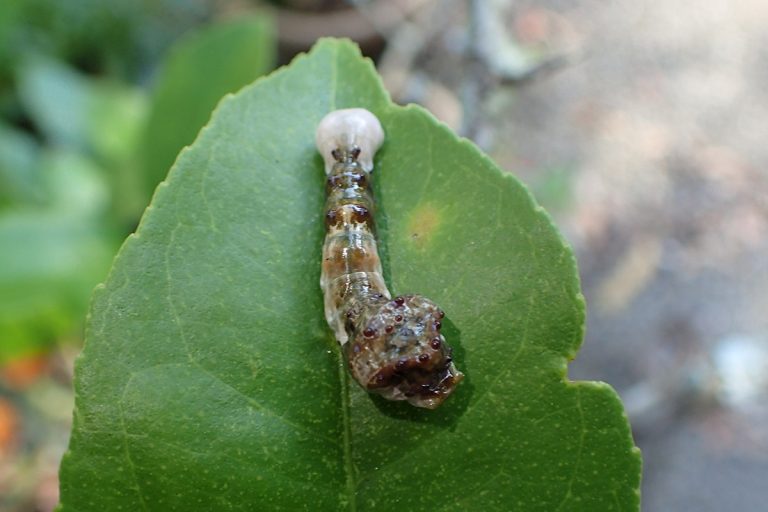
Giant swallowtail caterpillar on Meyer Lemon tree leaf. The WFSU Ecology Blog
The lime swallowtail butterfly — an invasive species that hails from Asia and which has damaged citrus trees throughout the Caribbean for nearly 20 years — has reached Florida. The butterfly is fairly large, with a wingspan of nearly four inches, similar to that of a monarch, and can be quite beautiful, as if Jackson Pollock made black-and.

Orchard or Citrus Swallowtail Butterfly Caterpillar on a lemon tree Stock Photo, Royalty Free
These are the leaves female giant swallowtails prefer to lay their eggs. In other words, don't be intimidated at a large citrus tree when looking for giant swallowtail eggs and caterpillars. Simply focus on new growth; whether found on the tips of branchs or suckers coming out of the trunk. Giant swallowtails can also be common in the.
Citrus Caterpillar by Zilyram
Wednesday - Giant Swallowtail Caterpillar. This looks a lot like bird poop; however, it's just a camouflage tactic of the giant swallowtail caterpillar ( Papilio cresphontes ). This species is often called the "orangedog" as they feed on members of the citrus family throughout their larval stage. They can be a pest to young citrus trees.

Caterpillars on Leaves of a Citrus Tree Stock Photo Image of branch, animal 237652590
Identification tip: Young citrus leaves and shoots are chewed, rolled, and webbed by many different species of caterpillars including amorbia, fruittree leafroller, and orange tortrix. Light brown apple moth, an exotic leafroller (Tortricidae), also causes this damage. Citrus leafminer distortion.

Citrus Swallowtail Caterpillar YouTube
The life cycle of caterpillars on orange trees typically follows four stages: egg, larva (caterpillar), pupa (chrysalis), and adult (butterfly or moth). The female butterfly or moth lays eggs on the leaves or fruit of the orange tree. Once the eggs hatch, the caterpillars emerge and begin feeding on the tree.